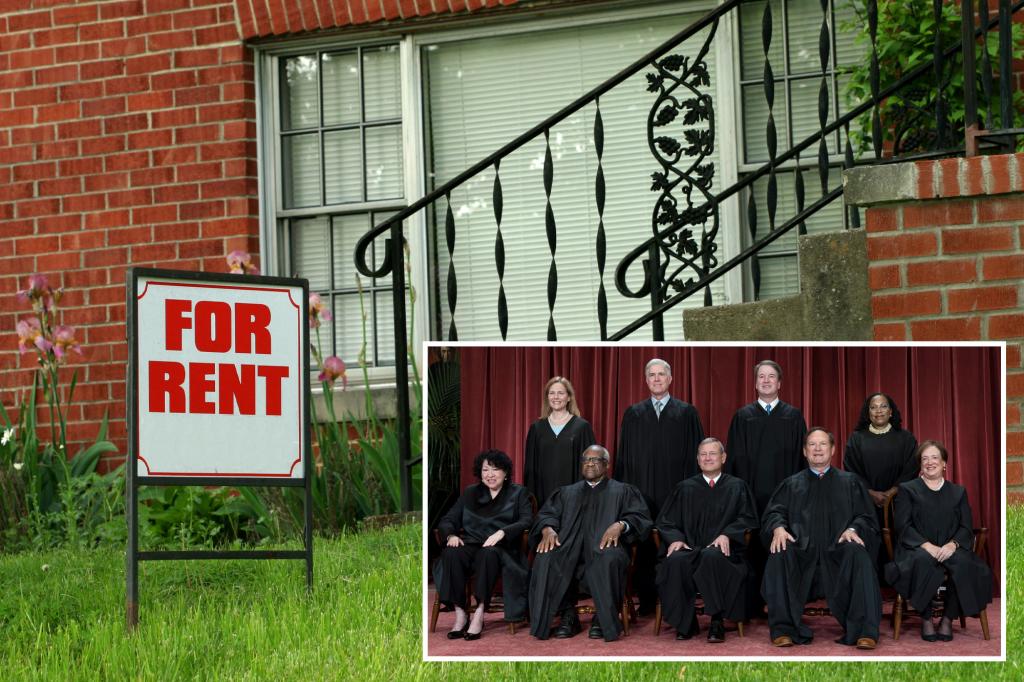A nondescript studio in a nondescript rental building speaks volumes about the state of New York’s rent regulation laws in 2023. Located in Murray Hill, the apartment had been occupied by the same European immigrant since the early 1970s. Rent stabilized for decades, the tenant’s rent had gradually risen from $300 in 1984 to $890 by the time he died in April 2021 from COVID.
More than two years later, the apartment remains empty. Despite Manhattan rental prices reaching record highs — and thousands of migrants scrambling for shelter — the landlord won’t spend the thousands of dollars needed to make the unit habitable.
New housing laws enacted in 2019 restrict the amount landlords can recoup from renovating rent-regulated apartments — even if the previous tenant had been there for half a century. So the studio is one of an estimated 40,000 “ghost apartments” across New York — left empty by landlords amid one of the city’s tightest housing markets.
Few rights are more sacred — or contested — than New York City’s approximately 1 million rent-controlled and stabilized apartments. But what if city housing covenants were not only found to be unreasonable — but unconstitutional by the US Supreme Court?
That’s the scenario landlords are eyeing as they’ve backed a series of lawsuits intended to place the fate of rent regulations before the highest court in the land. Now, after inching their way past lower judges, the Supreme Court could decide as early as this fall whether they’ll take on a case to end rent stabilization in New York.
Although ambitious, the focus on the Supreme Court makes sense both in terms of strategy and timing. The ending of Roe v. Wade and Affirmative Action demonstrate a willingness by the conservative-heavy court to overturn even the most sacrosanct cases. Emboldened by such precedents, the plaintiffs believe they have a once-in-generation opportunity to have the court do to rent regulations what it’s done for abortion and college admissions.

“We’re not saying that the government doesn’t have a right to regulate industries nor are we suggesting a victory . . . could necessarily end rent control,” says Jay Martin, Executive Director of the Community Housing Improvement Program, a nonprofit which represents 4,000 property owners and is helping to back their journey to the Supreme Court. “But under the Constitution, regulated businesses must be fairly compensated.”


The effort to nullify rent restrictions via the courts is hardly new: In 2012, for instance, the case Harmon v Kimmel framed rent regulation as arbitrary in application — as well as a violation of a landlord’s right for due process of law. The Supreme Court refused to hear the case, to the great relief of activists and renters at the time.
Nearly a decade on, the push to reach the Supreme Court has regained momentum amid a very different political landscape — and very different Supreme Court. The Trump-era appointments of Brett Kavanaugh, Neil Gorsuch and Amy Coney Barrett have created the most conservative court in nearly a century. Some 62% of all cases last term resulted in right-leaning rulings, according to statistics compiled by professors Lee Epstein of Washington University in St. Louis and Keven Quinn of the University of Michigan.
The striking down of abortion and affirmative action were clearly the highest-profile conservative decisions. But recent rulings around religious freedoms and wetland regulation suggest an unprecedented level of pro-business sentiment among the judges, as well. The court’s June decision limiting EPA efforts to enforce the Clean Water Act is particularly notable in its championing of property owners’ rights.


The rights of landlords — and the potential illegality of property taken without due compensation — is at the heart of the current Supreme Court push. The effort began in the wake of 2019’s Housing Stability and Tenant Protection Act — enacted by the same left-leaning state Legislature that also passed New York state’s much-maligned Criminal Justice Reform laws.
Prior to 2019, landlords could spend as needed to renovate empty units and bring them up to legal code. Those expenditures could then be passed onto new tenants via monthly increases which, in some cases, resulted in apartments no longer qualifying for rent regulation.
Post-2019, however, landlords may only recoup the first $15,000 spent on renovations — passed on to new renters via a maximum monthly increase of just $89. The 2019 overhaul ushered in additional changes, such as no longer allowing apartments to be “deregulated” once they hit a threshold of $2,744 per month.

The result: Tens of thousands of empty apartments that are cheaper to leave vacant than invest in upgrades whose costs, landlords say, are impossible to recover.
Back in 2018 after announcing his retirement, the centrist Justice Anthony Kennedy said he felt certain decisions around polarizing topics such as abortion and LGBT rights were not at risk of being overturned by his replacement to the Supreme Court. Much as Kennedy, blue-state city folk are treating the threat to rent control with a similar improbable indifference. Like abortion and affirmative action before it, decades of legally protected cheap housing feels like a progressive right that’s too big to fail.
Meanwhile, the Supreme Court could consider dismantling New York City housing as we know it a matter of months. And not just in New York: A federal strike-down could ultimately impact cities nationwide — particularly Los Angeles and San Francisco, where almost all rental units are under some form of control. Still, the landlords have made their motives clear. Which is why activist cries of shock and horror if the court upends rent regulations are likely to fall on deaf ears.
𝗖𝗿𝗲𝗱𝗶𝘁𝘀, 𝗖𝗼𝗽𝘆𝗿𝗶𝗴𝗵𝘁 & 𝗖𝗼𝘂𝗿𝘁𝗲𝘀𝘆: nypost.com
𝗙𝗼𝗿 𝗮𝗻𝘆 𝗰𝗼𝗺𝗽𝗹𝗮𝗶𝗻𝘁𝘀 𝗿𝗲𝗴𝗮𝗿𝗱𝗶𝗻𝗴 𝗗𝗠𝗖𝗔,
𝗣𝗹𝗲𝗮𝘀𝗲 𝘀𝗲𝗻𝗱 𝘂𝘀 𝗮𝗻 𝗲𝗺𝗮𝗶𝗹 𝗮𝘁 dmca@enspirers.com


